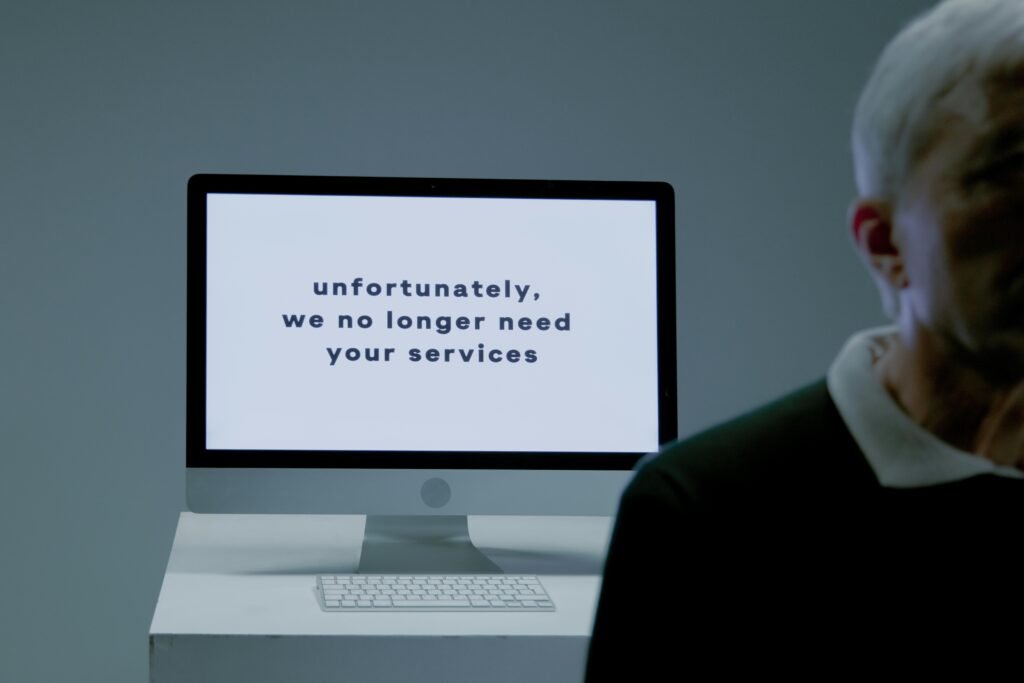
Understanding the MeEO Hierarchy
The MeEO Hierarchy is designed to help you take ownership of your career by breaking the process into clear, actionable steps.
At its heart, this framework emphasizes building self-awareness, developing a strategic plan, and consistently improving your skills.
Each layer of the hierarchy serves as a guide to help you assess where you are, what you need to work on, and how to take actionable steps forward.
The first step in the hierarchy is understanding your current position.
This means taking an honest look at your experiences, identifying the unique strengths you bring to the table, and acknowledging the areas where there’s room for improvement.
This clarity is essential in figuring out what steps to take next.
For instance, if you realize that your skills don’t align with the latest trends in your field, you might prioritize professional development or certifications that give you a competitive edge.
Next, the MeEO Hierarchy encourages intentional goal-setting.
This isn’t just about dreaming big; it’s about turning those ambitions into specific, measurable milestones that keep you moving forward.
Whether it’s landing a position in a new industry, increasing your income, or developing leadership skills, your goals should align with both your personal values and the market demands of your chosen field.
Another critical layer of the hierarchy focuses on action.
This is where you create a plan and put it into motion.
Taking ownership of your career involves deliberate actions, like networking with peers in your industry, leveraging professional platforms, and actively seeking out opportunities to grow.
For example, one person used this step to refine their online presence, updating their profiles and showcasing their accomplishments, which ultimately led to new career prospects.
The final element of the MeEO Hierarchy is adaptability.
Careers don’t follow a straight path, and success often involves staying flexible while continuing to refine your strategy.
Whether it’s learning a new skill or pivoting toward a different role, the ability to adjust is key to maintaining momentum.
This mindset keeps you prepared for challenges and ready to take advantage of unexpected opportunities.
The MeEO Hierarchy provides a practical, step by step approach to not just navigating career shifts but turning them into opportunities for growth and success.
Assessing Your Current Situation

To move forward in your career, it’s crucial to start by evaluating your current situation with honesty and precision.
This step lays the groundwork for identifying what you need to focus on to make meaningful progress.
Begin by reviewing your professional accomplishments and pinpointing the strengths that set you apart.
What have you consistently excelled at? Recognizing these areas helps you leverage your capabilities effectively during a job search.
At the same time, it’s equally important to identify areas for growth.
Are there specific skills or qualifications that could improve your marketability?
For instance, one professional found success by submitting a high volume of job applications and tracking their conversion rates, which enabled them to adjust their strategy and ultimately secure multiple job offers (applying for jobs in high volume and tracking conversion rates helped them adjust their application strategy).
This example highlights the importance of adapting your approach based on results, ensuring that you’re using your time and energy effectively.
Another crucial part of this assessment involves tailoring your resume to fit the roles you’re pursuing.
A generic resume can often get overlooked, but a customized one that emphasizes relevant skills and experiences can make a big impact.
Tailoring your resume for specific roles significantly increases your chances of getting noticed by recruiters (importance of tailoring resumes for specific roles) .
Don’t forget to evaluate the broader landscape of your field. Are there trends or shifts you should be aware of?
Understanding how your skills align; or don’t align, with what employers currently value can provide valuable direction.
If you notice gaps, use this insight to prioritize learning opportunities that can help bridge them.
Additionally, reflect on your personal preferences and professional goals.
What type of work environment brings out your best performance? Are you seeking stability, growth opportunities, or a complete change?
Being clear about what you want ensures that your efforts are aligned with your vision for the future.
By carefully assessing your current situation, you’ll gain a deeper understanding of your strengths, gaps, and priorities, positioning yourself to make strategic moves toward the next phase of your career.
Setting New Career Goals

Setting new career goals is about creating clarity and direction for your professional journey.
Start by identifying what truly matters to you; not just in your career but in your life as a whole.
Think about the type of work that excites you, the impact you want to make, and the lifestyle you hope to achieve.
These considerations will help you align your goals with your core values and priorities.
Break your objectives into two categories: short-term and long-term.
Short-term goals could include mastering a specific skill, expanding your professional network, or improving your interview techniques.
These are the steps that will build momentum and prepare you for bigger milestones.
Long-term goals, on the other hand, might involve transitioning to a leadership role, breaking into a new industry, or building expertise in a niche area of your field.
Make sure these goals are specific and measurable.
For instance, instead of saying, “I want to earn more,” set a target like, “I want to increase my salary by 20% within the next year.”
Another important aspect of setting career goals is staying grounded in market realities.
Take the time to research industry trends, job market demands, and emerging skills that are valued in your field.
This ensures your goals aren’t just personally fulfilling but also professionally relevant.
For example, if you’re in tech, staying updated on the latest programming languages or tools could set you apart as a candidate.
Or, if you’re looking to transition into project management, obtaining certifications like a PMP or Agile training could add credibility to your profile.
Visualizing your goals can also be incredibly motivating. Some people find it helpful to create a vision board, jot down their objectives in a journal, or map out their career trajectory on paper.
This physical representation of your goals serves as a constant reminder of what you’re working toward.
Most importantly, approach your goals with flexibility.
Life and career paths don’t always unfold as planned, so be open to adjusting your targets if needed.
While you should stay committed to your overall vision, give yourself the freedom to explore new possibilities or refine your approach as you gain more clarity and experience.
Building a Support Network

Building a strong support network is a powerful way to open new doors during a career reset.
Start by reaching out to trusted connections, such as former colleagues, mentors, and friends in your industry.
These individuals can provide valuable advice, insights, and even referrals to opportunities that align with your career goals.
One professional found great success by asking their network for referrals, which significantly boosted their chances of landing interviews (leveraging their network and asking for referrals significantly increased their chances).
Networking isn’t limited to people you already know. Joining professional groups, both in-person and online, can connect you with like-minded individuals who share your interests or work in your target field.
Online platforms like LinkedIn are especially useful for connecting with peers, following industry leaders, and participating in relevant discussions.
These interactions not only expand your network but can also make you more visible to potential employers.
Another effective strategy is to be transparent about your situation and goals.
Sharing your story can resonate with others and attract meaningful opportunities.
For example, one professional posted about their layoff on LinkedIn, outlining their skills and the type of role they were seeking.
This approach directly led to job opportunities (posting about their layoff on LinkedIn helped them attract relevant opportunities).
Don’t overlook the value of reaching out directly to industry professionals or recruiters.
A polite, personalized message introducing yourself and expressing your interest in a specific role or company can leave a positive impression.
Likewise, attending industry events, webinars, or workshops provides an excellent chance to meet people face to face and establish authentic connections.
These conversations can lead to mentorships, collaborations, or even direct job offers.
Remember, building a support network is a two-way street.
Offer your own assistance and share helpful resources when possible.
Creating mutually beneficial relationships not only strengthens your network but also fosters trust and goodwill, which can be invaluable as you navigate your career reset.
Enhancing Your Skill Set

Expanding your skill set is one of the most effective ways to increase your marketability and stand out to potential employers.
Start by identifying which skills are in demand within your industry.
Research job descriptions for roles you’re targeting to pinpoint specific qualifications and expertise that employers value.
Once you’ve identified these areas, explore opportunities to strengthen your knowledge.
Online learning platforms, industry certifications, and specialized workshops are excellent resources for building expertise in targeted areas.
Gaining certifications not only validates your skills but can also give you a competitive edge in the job market.
Additionally, highlight the skills you already possess by updating your professional profiles and resumes.
According to LinkedIn, members with at least five skills listed receive significantly more profile views, emphasizing the importance of showcasing your capabilities (members with at least five skills listed receive up to 17 times more profile views).
Take time to reflect on both technical skills and soft skills, such as leadership, communication, and problem-solving.
These abilities are often just as important as industry specific knowledge.
To stay relevant, immerse yourself in the latest trends and tools in your field.
For example, if you work in technology, it’s essential to stay updated on emerging software or programming languages.
If you’re in marketing, learning about new digital platforms or analytics tools can make a noticeable difference in your profile.
The job market moves quickly, and positioning yourself as someone who’s proactive about professional growth signals to employers that you’re adaptable and forward-thinking.
Seek out real-world applications for your skills as well.
Volunteering, freelancing, or taking on short term projects can provide hands on experience while allowing you to build a portfolio of work.
These efforts not only demonstrate initiative but can also serve as valuable conversation points during interviews.
By actively pursuing opportunities to grow and apply your skills, you’ll develop a stronger, more confident professional identity that aligns with your career goals.
Practicing Self-Care

Taking care of yourself is critical during a career reset.
The process of job searching and rebuilding your professional path can be emotionally and physically taxing, which is why prioritizing self-care is not just helpful but necessary.
Begin by establishing routines that promote both mental and physical health.
Regular exercise, even something as simple as a daily walk, can reduce stress and improve focus.
Pair this with practices like meditation or mindfulness to help you stay grounded and maintain clarity during what can feel like an uncertain time.
Balancing your time is equally important.
Treat your job search with structure by setting specific hours for applying to jobs, networking, and skill-building.
For example, some find it effective to dedicate 8–10 hours a day to their job search (treating the job search as a full-time job by dedicating 8-10 hours a day), while ensuring that they step away for breaks to recharge.
Remember, constant overexertion can lead to burnout, so give yourself permission to unplug and recharge.
Sleep is another cornerstone of self-care that should not be overlooked.
When you’re well-rested, you’re more likely to approach your goals with a positive attitude and clear focus.
Establishing a regular bedtime routine can make a significant difference, especially when paired with habits that signal to your brain that it’s time to wind down, such as limiting screen time or practicing relaxation techniques.
Don’t hesitate to reach out for emotional support when needed.
Talking with friends, family, or even a professional therapist can help you process the emotional challenges of a layoff and stay motivated.
Surrounding yourself with positivity and encouragement reinforces resilience and strengthens your mindset.
Finally, make space for activities that bring you joy and fulfillment outside of work.
Whether it’s a creative hobby, spending time outdoors, or catching up with loved ones, these moments can replenish your energy and improve your overall outlook.
When you prioritize your well being, you’re better equipped to tackle your career reset with confidence and determination.
Staying Motivated and Persistent

Maintaining motivation and persistence during your career reset can be challenging, but it’s a critical part of reaching your goals.
Progress often comes in small, incremental steps, so focus on creating daily habits that keep you moving forward.
Begin by setting a structured schedule for your job search and professional development.
Treat your career reset like a job itself, dedicating consistent blocks of time to activities like networking, applying for positions, and refining your skills.
This routine not only ensures steady progress but also reinforces a sense of control over your situation.
Tracking your progress is another powerful way to stay motivated. Keep a record of the jobs you’ve applied to, the people you’ve connected with, and the skills you’re building.
Seeing your efforts laid out can provide encouragement, especially on days when it feels like nothing is moving forward.
It also helps you identify what’s working and where you might need to adjust your approach.
For instance, following up with decision makers; such as sending a thoughtful LinkedIn message or email after submitting an application, can significantly improve your chances of being noticed by employers.
(following up with decision-makers after applying to jobs increased their chances of being noticed) .
Remember, resilience plays a key role in navigating this journey.
Rejections and setbacks are part of the process, but they don’t define your potential.
Shift your perspective and view each “no” as an opportunity to learn and refine your strategy.
For example, if you receive feedback after an interview, use it to sharpen your responses for the next opportunity.
This approach not only helps you improve but also keeps you focused on what’s within your control.
Celebrating your wins, no matter how small, can also boost your confidence.
Whether it’s getting a callback, making a new connection, or mastering a new skill, take time to acknowledge your progress.
These victories, while seemingly minor, add up over time and build the momentum you need to achieve larger goals.
It’s equally important to manage your mindset throughout the process.
Surround yourself with positivity by engaging with people who uplift and inspire you.
Stay focused on the larger vision you’ve set for your career, and remind yourself why these efforts matter.
Visual tools, like a list of long term goals or a simple note of encouragement on your desk, can serve as daily motivators to keep you going.
Lastly, practice patience with yourself.
Career resets don’t happen overnight, and perseverance is what ultimately leads to success.
By taking consistent, intentional actions and maintaining a forward thinking mindset, you’re laying the groundwork for a stronger, more fulfilling career.

Все про ремонт https://lesnayaskazka74.ru и строительство: от идеи до сдачи. Пошаговые гайды, электрика и инженерия, отделка, фасады и кровля. Подбор подрядчиков, сметы, шаблоны актов и договоров. Дизайн-инспирации, палитры, мебель и свет.
Ремонт и строительство https://nastil69.ru от А до Я: планирование, закупка, логистика, контроль и приёмка. Калькуляторы смет, типовые договора, инструкции по инженерным сетям. Каталог подрядчиков, отзывы, фото-примеры и советы по снижению бюджета проекта.
Хочешь сдать акб? сдать аккумулятор бу честная цена за кг, моментальная выплата, официальная утилизация. Самовывоз от 1 шт. или приём на пункте, акт/квитанция. Безопасно и законно. Узнайте текущий тариф и ближайший адрес.
Нужен аккумулятор? аккумуляторы автомобильные купить в спб с доставкой в наличии: топ-бренды, все размеры, правый/левый токовывод. Бесплатная проверка генератора при установке, trade-in старого АКБ. Гарантия до 3 лет, честные цены, быстрый самовывоз и курьер. Поможем выбрать за 3 минуты.
АрендаАвто-мск https://mosavtomoto.ru прокат авто без водителя в Москве. Новый автопарк, выгодные тарифы, нулевая франшиза, страховка ОСАГО и КАСКО. Бизнес, премиум и эконом-класс. Быстрое бронирование и аренда в день обращения. Звоните: 8 495 2900095. Свобода движения в Москве!
Ищешь аккумулятор? акб купить в спб AKB SHOP занимает лидирующие позиции среди интернет-магазинов автомобильных аккумуляторов в Санкт-Петербурге. Наш ассортимент охватывает все категории транспортных средств. Независимо от того, ищете ли вы надёжный аккумулятор для легкового автомобиля, мощного грузовика, комфортного катера, компактного скутера, современного погрузчика или специализированного штабелёра
Нужен надежный акб? магазин аккумуляторов автомобильных AKB STORE AKB STORE — ведущий интернет-магазин автомобильных аккумуляторов в Санкт-Петербурге! Мы специализируемся на продаже качественных аккумуляторных батарей для самой разнообразной техники. В нашем каталоге вы найдёте идеальные решения для любого транспортного средства: будь то легковой или грузовой автомобиль, катер или лодка, скутер или мопед, погрузчик или штабелер.
Радио и подкасты этология про на русском онлайн о МД, MGTOW, этологии и психологии. Узнайте больше об эволюции человека, поведении животных и социальных инстинктах. Интеллектуальный взгляд на отношения и природу поведения. Интеллектуальный взгляд на отношения и природу поведения.
Всё о строительстве https://gidfundament.ru и ремонте в одном месте: технологии, нормы, сметные калькуляторы, прайсы и тендерная лента. Каталог компаний, аренда спецтехники, рейтинги бригад и отзывы. Гайды, чек-листы и типовые решения для дома и бизнеса.
Актуальные новости автопрома https://myrexton.ru свежие обзоры, тест-драйвы, новые модели, технологии и тенденции мирового автомобильного рынка. Всё самое важное — в одном месте.
Строительный портал https://stroimsami.online новости, инструкции, идеи и лайфхаки. Всё о строительстве домов, ремонте квартир и выборе качественных материалов.
Новостной портал https://daily-inform.ru с последними событиями дня. Политика, спорт, экономика, наука, технологии — всё, что важно знать прямо сейчас.
A reliable partner https://terionbot.com in the world of investment. Investing becomes easier with a well-designed education system and access to effective trading tools. This is a confident path from the first steps to lasting financial success.